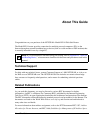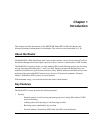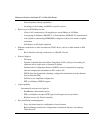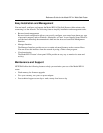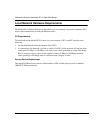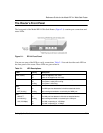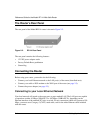
Reference Guide for the Model RP114 Web Safe Router
1-4 Introduction
Autosensing 10/100 Ethernet
With its internal, 4-port 10/100 switch, the Model RP114 router can connect to either a 10 Mbps
standard Ethernet network or a 100 Mbps Fast Ethernet network. The local LAN interface is
autosensing and is capable of full-duplex or half-duplex operation.
The Model RP114 router incorporates Auto Uplink
TM
technology. Each LOCAL Ethernet port will
automatically sense whether the Ethernet cable plugged into the port should have a 'normal'
connection (e.g. connecting to a PC) or an 'uplink' connection (e.g. connecting to a router, switch,
or hub). That port will then configure itself to the correct configuration. This feature also
eliminates the need to worry about crossover cables, as Auto Uplink
TM
will accommodate either
type of cable to make the right connection.
TCP/IP
The Model RP114 router supports the Transmission Control Protocol/Internet Protocol (TCP/IP)
and Routing Information Protocol (RIP).
For further information about TCP/IP, refer to Appendix B, “Network and Routing Basics.”
• IP Address Masquerading by Dynamic NAT+
The Model RP114 router allows several networked PCs to share an Internet account using only
a single IP address, which may be statically or dynamically assigned by your Internet service
provider (ISP). This technique, an extension of Network Address Translation (NAT), is also
known as IP address masquerading and allows the use of an inexpensive single-user ISP
account.
• Automatic Configuration of Attached PCs by DHCP
The Model RP114 router dynamically assigns network configuration information, including
IP, gateway, and domain name server (DNS) addresses, to attached PCs on the LAN using the
Dynamic Host Configuration Protocol (DHCP). This feature greatly simplifies configuration
of LAN-attached PCs.
• DNS Proxy
When DHCP is enabled and no DNS addresses are specified, the router provides its own
address as a DNS server to the attached PCs. The router obtains actual DNS addresses from
the ISP during connection setup and forwards DNS requests from the LAN.
• PPP over Ethernet (PPPoE)
PPP over Ethernet is a protocol for connecting remote hosts to the Internet over an always-on
connection by simulating a dial-up connection.




